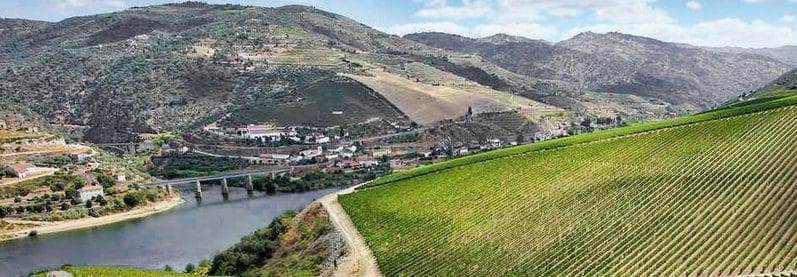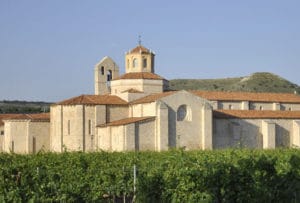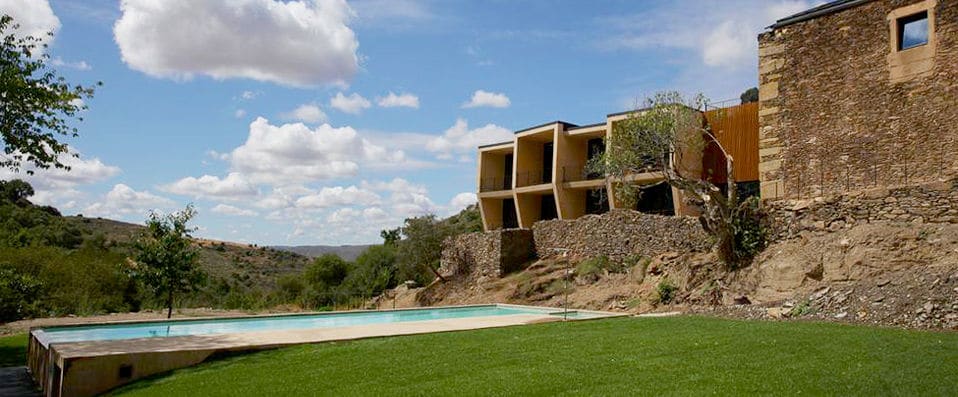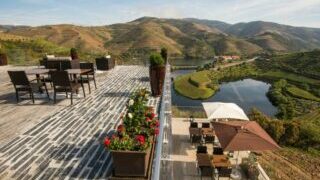
We love to keep up with the photos and videos of your fabulous cycling tour!
Follow us on Instagram at @bikespaintours and on Facebook at BikeSpainTours, and tag us in the posts from your trip.
Don’t forget to join our Strava club, so we can give you kudos for all your amazing bike rides!
Your guide for this tour will be Enrique: (+34) 696 546 088
Call the Bike Spain Tours office on +34 915 590 653, or out of office hours call +34 677 356 586. We will get you where you need to be and get you the help you need.
In order to ensure that there is enough space for everyone to travel comfortably in the van, we ask that you bring only one standard hold luggage size suitcase and one rucksack per person.
Please be aware that Spaniards follow a very particular routine in terms of their daily meals, and this is often strictly enforced by restaurant opening hours, especially in small towns!
You can expect restaurants to be open for lunch from approximately 1:30pm – 4pm. Remember that lunch is the main meal of the day in Spain.
Dinnertime in Spain is any time from 8pm onwards. Dinner in Spain is typically a lighter meal.
Your insurance policy number is 21173682. You can find your insurance documents here.
Monday, 21st October: Peñafiel, Spain
Route: 64.9 km/40.3 miles
Elevation: +342m/+1,123 ft
Accommodation: Castilla termal Valbuena SPA
Meals included: Breakfast
10am: Enrique, your guide, will pick you up at xxxx for your transfer to Sepúlveda.
This charming medieval town was most affluent in the 11th and 12th centuries, as evidenced by the splendid architectural legacy dating back to this era. The town boasts the oldest Romanesque church constructed in the province, dating back to 1093.
From Sepúlveda, we’ll continue to the stunning gorges of the Duratón river, Las Hoces del Duratón, set in their own protected Natural Park. Here, we’ll see the impressive 7th century Hermitage of San Frutos, carved into the rock, and possibly also spot some local eagles or vultures. Next, it’s time to start cycling!
Our route takes us around the Natural Park of Las Hoces del Duratón, following the course of the Duratón river past centuries-old castles and windmills and eventually through vineyards as we enter the Protected Designation of Origin wine region of Ribera del Duero.
We’ll pass by the ancient hilltop village of Fuentedueña, whose fortifications date back to pre-Roman times and boasts an impressive Celtic necropolis and a spectacular Romanesque basilica. Next, we’ll visit the picturesque village of Sacramenia, fortified during the Christian reconquest of Spain and whose impressive legacy of palaces and Romaneque churches are evidence of its importance during the late medieval period. We’ll enjoy lunch in one of these two towns (depending on our cycling speed), before following the river northwards towards our hotel.
We’ll spend the night in one of the best-preserved 12th century Cistercian monasteries in Europe. Overlooking the Duero River, the views from the hotel stretch across over the surrounding vineyards and countryside.
8:30pm: Dinner tonight is not included, but we have booked a table for you at the hotel restaurant.
At leisure in Valbuena
As early as the 12th century, the Cistercian monks discovered water-bearing rock deep below the surface, whose mineral-medicinal waters were used to irrigate their countryside and vineyards. Almost ten centuries later, the hotel continues to employ these thermal waters in their in-house spa. Please let us know in advance if you would like us to book any treatments for you.
Tuesday, 22nd October: Peñafiel, Spain
Route: 59.9 km/37.2 miles
Elevation: +513m/+1684 ft
Accommodation: Castilla termal Valbuena SPA
Meals included: Breakfast
Today’s route takes us through some of through the oldest vineyards of Ribera del Duero. We’ll visit the town of Pesquera del Duero, known for growing some of the best grapes in the region, and dedicated almost exclusively to wine production. The historic old town features a beautiful porticoed Plaza Mayor, as well as numerous palaces, decorated with the family crests of the aristocrats of centuries gone by.
Once here, we’ll follow the course of the Duero river through endless vineyards, finishing at the historic fortified town of Peñafiel, one of the region’s centres of wine production. The town’s castle, the oldest part of which dates back to the 9th century, has been repurposed into a Wine Museum. We’ll take a stroll around the winding streets of the historic Jewish Quarter, and visit the charming Plaza del Coso, which retains its original traditional wooden balconies. During the summer, the square fulfils its original medieval function as the town bullring.
8:30pm: Dinner tonight is not included, but we have booked a table for you at the nearby Posada Valbuena.
Wednesday, 23rd October: Toro, Spain
Route: 53.6 km/33.3 miles
Elevation: +413m/+1354 ft
Accommodation: NH Palacio de Zamora
Meals included: Breakfast, lunch and dinner
In the morning, we’ll travel by van the short distance to Toro, known for the local variety of red wine: “Tinta de Toro”, which has its own Denomination of Origin status. Due to its strategic location, Toro has been of great importance over the centuries: a stronghold for the Moors and then the Christians in medieval times, as evidenced by its 10th century fortifications, and in later centuries a royal court. The town is built in the shape of a fan, and offers views of the surrounding fertile plains, known as the Oasis of Castile.
From Toro, we’ll jump on our bikes and enjoy a gentle ride through picturesque, agricultural countryside with lots of sprawling vineyards. Toro is a relatively new wine-making region, which is slowly gaining recognition. Today’s route ends with a delicious lunch at a local winery.
1:45pm: Guided tour and lunch at Bodega Divina Proporción.
Tonight, we’ll stay in the historic city of Zamora, whose old town boasts one of the largest Romanesque urban complexes in Spain.
9pm: Dinner at Restaurante Liberten.
Thursday, 24th October: Figueira de Castelo Rodrigo, Portugal
Route: 41.8 km/26 miles
Eevation: +463m/+1521 ft
Accommodation: Colmeal Countryside Hotel
Meals included: Breakfast and dinner
It’s time to say adiós Spain, and olá Portugal!
After breakfast, we’ll travel by van through the spectacular area of the La Almendra dam, one of the biggest in Europe. The impressive dam was built between 1964 and 1970 and forms part of the hydroelectric system known as the “Duero Drops”.
Our van will drop us off at the hamlet of Villasbuenas, from where we’ll continue by bike, following the course of the river across the border into Portugal. Our cycle route takes us through the Arribes del Duero Natural Park, recognised as a Biosphere Reserve by UNESCO due to the huge variety of flora and fauna that inhabit the area. Keep a look out for the famous black storks! We can also enjoy spectacular scenery as the river courses through a deep canyon, which marks the division between Spain and Portugal.
After crossing the border near the Salto de Saucelle dam, we’ll follow the river (now called the Douro in Portuguese) towards the beautiful riverside town of Barca d’Alva, surrounded by terraced vineyards and picturesque olive and almond groves. This area offers some of the best birdwatching in Portugal: buzzards, falcons, swifts, and black storks and nesting eagles! We’ll enjoy lunch in Barca d’Alva before travelling by van to our final destination, the beautiful medieval village of Colmeal, which is just a stone’s throw away from our eco-friendly hotel for the night.
Optionally, we can make a quick trip by van to visit the historic town of Castelo Rodrigo, one of the 7 wonders of Portugal. Here, we can visit the well-preserved 12th century Gothic castle, which once played an important role as a frontier outpost during centuries of border battles between Spain and Portugal.
8:30pm: Tonight, we’ll enjoy a delicious dinner of locally-sourced traditional fare at Taverna da Matilde.
Friday, 25th October: Pinhão, Portugal
Route: 74.4km/46.2 miles
Elevation: +1237m/+4060 ft
Accommodation: Vila Galé Douro Vineyards
Meals included: Breakfast and dinner
Our day begins with a visit to one of the most interesting archaeological sites in Europe. The Côa Valley is home to over a thousand outcrops with rock art, predominantly from the Upper Paleolithic, dating back to 30.000 years ago. The valley comprises a fascinating open-air prehistoric art gallery, set in a spectacular location above the Douro river, and has been designated a UNESCO World Heritage Site.
From here we make our way to the start of today’s bike ride, a beautiful route along quiet roads, with vineyards blanketing the landscape. We’ll reach the Douro River Valley at the beautiful town of Pinhão, where we’ll be able to enjoy spectacular views of the terraced vineyards that cover the valley slopes. We’ll make a stop here before continuing to pedal through beautiful landscapes to our hotel, set in a vineyard of its own.
Tonight, we’ll enjoy a delicious dinner at our hotel, paired with locally-produced wines.
8:30pm: Dinner at the hotel.
Saturday, 26th October: Porto, Portugal
Route: 47.5 km/23.9 miles
Elevation: +967m/+3172 ft
Accommodation: Hotel Eurostars Aliados
Meals included: Breakfast and lunch
This morning, we’ll enjoy a beautiful final ride along the course of the river, which offers us glimpses of the many fortresses that dot the surrounding landscape. This area is at the heart of port wine production in Portugal.
On arrival in Peso da Regua, known as the Port wine capital, we will visit a beautiful port wine quinta, for a guided wine tasting and a lunch of delicious local fare – the perfect opportunity to relive the week’s biking adventures.
2pm: Lunch and wine tasting at Bodega Quinta Pacheca.
Here, your guide will say goodbye to you.
Gratuities
Gratuities for our guides are much appreciated to thank them for exceptional service, support, and expertise. The industry standard for each individual guest is 7.5-10% tip of the trip price at the end of the tour. Local currency is preferred.
After lunch, you will travel by van to the colourful city of Porto, where you will spend your final night of the tour. In case of any issues with the transfer, please contact Nuno: +351 962714104.
At leisure in Porto
The city of Porto, built along the hillsides overlooking the mouth of the Douro river, is an outstanding urban landscape with a 2,000-year history. The historic centre, Luiz I Bridge and Monastery of Serra do Pilar, are recognised as a UNESCO World Heritage Site.
Eating and drinking in Porto
Sunday 27th October
Departure day
Meals included: Breakfast
After breakfast, our services come ot an end. We hope that you had a wonderful time discovering the wine regions of the Duero with us!
Castilla Termal Monasterio de Valbuena

Right at the heart of Ribera del Duero, this hotel – the first spa with 5 stars status in Castilla y León – is located in one the best preserved Cistercian monastery of the 12thcentury in Europe.
The Monastery of Santa María de Valbuena provides 79 rooms, all of them of high quality, a spa centre and hot spring bath, an outdoor pool, children’s playground and terrace.
Colmeal Countryside Hotel

Colmeal Countryside Hotel, “welcome to the land of silence”. This unique hotel is located right in the heart of the nature, where its architecture melts with the landscape.
The historical and uninhabited village of Colmeal is located on a farm spread over more than 650 hectares. This hotel, located in the middle of nature, it´s well-know for its unique design and for being as a “silence hotel”. They take seriously the concept of silence and tranquility .At the Colmeal Countryside Hotel, we do not make strict vows of silence but of serenity. Welcome to the land of silence. Find what you need to switch off from the world. And connect to yourself.
There is a pool, a spa and beautiful surroundings for activities such as hiking or cycling.
Vila Galé Douro Vineyards

In the heart of the Douro region, Vila Galé Douro Vineyards is set in the centuries-old Quinta do Val Moreira. The property features an outdoor swimming pool and a terrace with scenic views over the Douro and the Tedo rivers.
Producing its own wines, the property features a restaurant with floor-to-ceiling windows and panoramic views, serving regional cuisine. Guests can enjoy a drink at the bar or take a tour of the wine cellars, where wine tastings are available daily.
Vila Galé Douro Vineyards stands out for its location, charm and exclusivity. Enjoy walking among the vineyards, the olive groves or the almond tree groves.
Bike Spain Tours will provide you with a helmet (if requested), a water bottle, a tshirt, phone case and a handlebar bag. On our guided tours, you will also receive a complimentary bike jersey.
To check the weather before you leave on your trip, please take a look at current weather conditions at www.weatheronline.co.uk. For historical temperature and precipitation statistics visit www.weatherbase.com or take a look at the Spanish Meteorological website with detailed information per region (http://www.aemet.es/en/elclima/datosclimatologicos/valoresclimatologicos)
The history of Spain is a compendium of influences from the different cultures that have lived in the country. The first settlers on the Peninsula were the Celts and the Iberians. The Roman presence in Hispania lasted for seven centuries, during which time the basic borders of the Peninsula in relation to other European towns were set up. Many institutions were inherited from Rome such as the concept of family, Latin as a language, religion and law. At the start of the 5th century new settlers from the North arrived and settled on the Peninsula: the Visigoths in the interior and the Swabians on the West. The decomposition of the Visigoth state apparatus would lead to the successive infiltration of Arab and Berber troops from the other side of the Straits of Gibraltar at the beginning of the 8th century. In the middle of the 8th century the Muslims had completed occupation and Cordoba became the center of the flourishing Andalusian state. The Arab presence in Spain would last for almost seven centuries and leave an indelible mark on the Spanish cultural heritage.
Following a long period of peaceful coexistence, the small Christian strongholds in the North of the Peninsula took on a leading role in the Reconquest, which ended with the capture of Granada in 1492 under the reign of the Catholic King and Queen, traditionally considered the founders of peninsular unity and the imperial management of the Spanish revival. The 16th century represents the zenith of Spanish hegemony in the world, a process that would last until the middle of the 17th century. Following the death of Charles II, the last of the Austrians, who died without having had children, Phillip V inaugurated the dynasty of the Bourbons of Spain.
The crisis of the Old Order opened the doorway to the Napoleonic invasion. The War of Independence was a war against the French invasion, but also a revolutionary war due to the decisive involvement of the people and the clear formation of a national consciousness that would later shape the 1812 Constitution. The Courts of Cadiz thereby enacted one of the first Constitutions of the world which ratified that sovereignty would reside in the nation. The conflict between liberalists and absolutists, or in other words, between two different ways of perceiving the establishment of the state, would be one of the longest Spanish conflicts throughout the 19th century.
The ballot box is introduced into Spain and with it the first democratic experience of the 20th century: the second Republic, a brief attempt to introduce the reformations the country needed, frustrated by General Franco’s military rising and the outbreak of the Civil War in 1936. The military victory of General Franco gave way to a long dictatorial period that would last until 1975. Following his death, the Spanish peacefully made the transition from dictatorship to democracy in a process known as ‘the Spanish model’. Don Juan Carlos I, as King of the Spanish people, became the chief of a social and democratic state of law, which molded the Constitution of 1978.
More information…? Should you be interested in a specific theme, please check here, you will find many info about culture, environmental issues, nature, society, geography and politics.
In Spain you have exquisite and innovative dishes with the guarantee of internationally prestigious chefs. The highest quality products from the best producers, recipes combining popular tradition with artistic creation and offer you exciting, new flavors. Spain’s culinary revolution, headed by master chefs like Ferrán Adriá, Arzak and Berasategui turns the pleasure of good food into a luxury for the senses that is at its finest when savored in Spain.
Spanish cuisine is nowadays recommended in the finest restaurants, heralded by the most prestigious critics and demanded by millions of consumers over the world. It has gone through a real revolution, which, in the time of a few short years, has put Spain at the top of international cuisine. With traditional styles as the basis, a modern, innovative cuisine has developed, identified by the use of quality products and by the creativity of its chefs.
To read more about Spain’s cuisine
Info
About UsContact Info
Plaza de la Villa 1,
28005 Madrid
+34 915 590 653
info@bikespain.com
